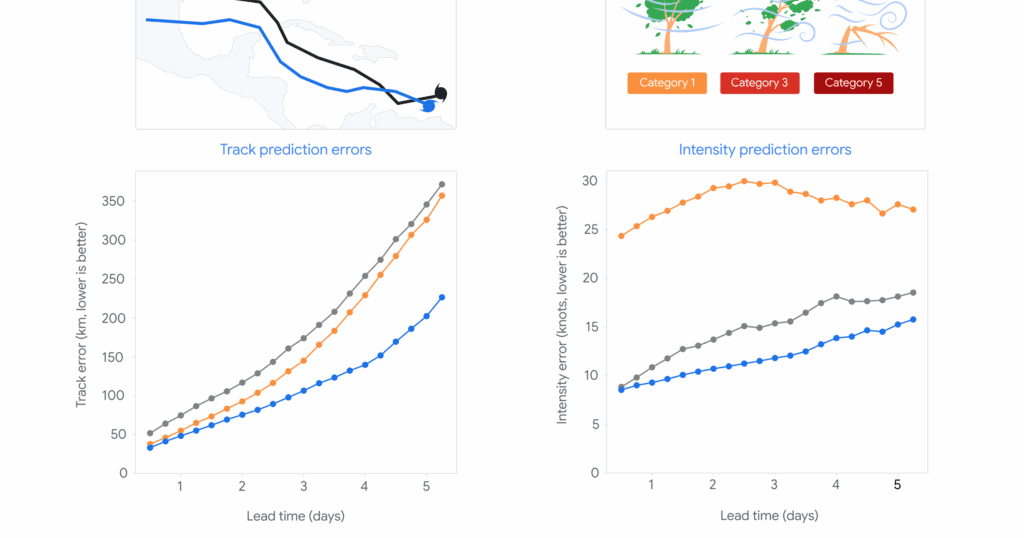NOAA’s National Hurricane Center (NHC), Google DeepMind and Google Research are teaming up to maximize the benefits of a new artificial intelligence (AI) weather forecast model to advance NOAA’s mission to save lives, mitigate property loss and improve the nation’s economy by issuing the best forecasts of hurricanes and other hazardous tropical weather.
NHC is responsible for issuing watches, warnings, forecasts and analyses of hazardous tropical weather, including hurricanes. NHC uses a wide variety of data and numerical models to aid in development of these official forecasts and warnings, and Google is among the global leaders in AI weather model development. This collaborative effort will ensure that NHC is able to quickly evaluate new models and provide feedback to Google’s AI for weather team.
“The pace of weather modeling innovation is increasing and Google is a stellar partner in AI weather model development,” said NHC director Michael Brennan. “This collaboration between NOAA and Google will ensure that NOAA’s National Hurricane Center is able to quickly evaluate new tropical cyclone forecasting technology as it arises.”
The new cooperative research and development agreement (CRADA) will bring together scientists and developers from NHC’s Technology and Science Branch and Hurricane Specialist Unit with scientists from Google DeepMind and Google Research.
“We are honored to collaborate with NOAA, bringing the power of AI models to the U.S. National Weather Service agency,” said Ferran Alet, research scientist at Google DeepMind. “We look forward to working together on the agency’s smooth integration of AI models into NHC operations to enhance their track and intensity forecasts.”
Through this partnership Google’s AI for weather team will provide near-real-time AI tropical cyclone forecasts to NHC for the purpose of evaluations, improvements and integration within NOAA’s technical infrastructure. Google will also host and maintain a visualization platform called Weather Lab to view the AI model outputs. In addition to provision of data and numerical model output, NOAA will perform routine evaluations of Google’s new and updated models and jointly share progress and results of the collaboration to the public and scientific community. The partnership will put new models in the hands of the NHC forecasters, who directly communicate hazard risk to the public and partners to enable life saving actions.
NHC is America’s calm, clear, and trusted voice in the eye of the storm and, with its partners, enables communities to be safe from tropical weather threats.

These four graphs show how the Google AI hurricane forecast model compares to two physics-based models in terms of predicting the hurricane track and intensity. Credit: Google
NOAA regularly partners with private sector companies through CRADAs to conduct research and development work that is mutually beneficial and helps to accomplish NOAA’s mission. This CRADA is part of a larger group of efforts to develop and use AI-based forecast models at NOAA. NOAA CRADAs are coordinated through NOAA Research’s Office of Research, Transition, and Application (ORTA) Technology Partnerships Office (TPO).
